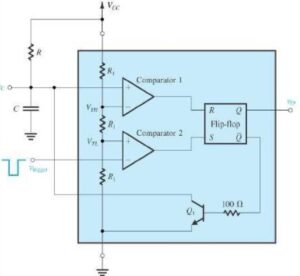Syllabus of Applied Physics-I ( BTEUP )
DETAILED CONTENTS
Chapter -1 : Units and Dimensions
1.1 Need of Measurement in engineering and science, unit of a physical quantities – fundamental and derived units, systems of units (FPS, CGS and SI units).
1.2 Dimensions and dimensional formulae of physical quantities.
1.3 Principle of homogeneity of dimensions
1.4 Dimensional equations and their applications, conversion of numerical values of physical quantities from one system of units into another, checking the correctness of physical equations and deriving relations among various physical quantities.
1.5 Limitations of dimensional analysis
1.6 Error in measurement, accuracy and precision of instruments, random and systematic errors, absolute error, relative error, and percentage error, Estimation of probable errors in the results of measurement (combination of errors in addition, subtraction, multiplication, division and powers), rules for representing significant figures in calculation.
1.7 Application of units and dimensions in measuring length, diameter, circumference, volume, surface area etc. of metallic and non metallic blocks, wires, pipes etc (at least two each).
Chapter – 2 : Force and Motion
2.1 Scalar and vector quantities – examples, representation of vector, types of vectors
2.2 Addition and Subtraction of Vectors, Triangle and Parallelogram law (Statement only), Scalar and Vector Product.
2.3 Resolution of Vectors and its application to lawn roller.
2.4 Force, Momentum, Statement and Derivation of Conservation of linear momentum, its applications such as recoil of gun.
2.5 Impulse and its Applications
2.6 Circular motion (Uniform and Non-uniform), definition of angular displacement, angular velocity, angular acceleration, frequency, time period.
2.7 Relation between linear and angular velocity, linear acceleration and angular acceleration (related numerical)
2.8 Central force, Expression and Applications of Centripetal and centrifugal forces with examples such as banking of roads and bending of cyclist, Principle of centrifuge.
2.9 Application of various forces in lifts, cranes, large steam engines and turbines
Chapter – 3 : Work, Power and Energy
3.1 Work: and its units, examples of zero work, positive work and negative work, conservative and non-conservative force.
3.2 Friction: modern concept, types, laws of limiting friction, Coefficient of friction and its Engineering Applications.
3.3 Work done in moving an object on horizontal and inclined plane for rough and plane surfaces with its applications.
3.4 Energy and its units: Kinetic energy and potential energy with examples and their derivation, work energy theorem.
3.5 Principle of conservation of mechanical energy for freely falling bodies, examples of transformation of energy.
3.6 Power and its units, calculation of power in numerical problems.
3.7 Application of Friction in brake system of moving vehicles, bicycle, scooter, car trains etc.
Chapter – 4 : Rotational Motion
4.1 Concept of translatory and rotatory motions with examples.
4.2 Definition of torque with examples
4.3 Angular momentum, Conservation of angular momentum (quantitative) and its examples
4.4 Moment of inertia and its physical significance, radius of gyration for rigid body, Theorems of parallel and perpendicular axes (statements only), Moment of inertia of rod, disc, ring and sphere (hollow and solid) (Formulae only). Concept of Fly wheel.
4.5 Rotational kinetic energy, Rolling of sphere on the slant plane.
4.6 Comparison of linear motion and rotational motion.
4.7 Application of rotational motions in transport vehicles, and machines
Chapter – 5 : Motion of planets and satellites
5.1 Gravitational force, Kepler’s law of planetary motion.
5.2 Acceleration due gravity and its variation.
5.3 Gravitational Potential and Gravitational potential energy.
5.4 Motion of satellite, orbital velocity and time period of satellite, Total energy and Binding energy of a satellite, Escape energy and escape velocity.
5.5 Types of satellites, Geo-stationary satellite, semi-synchronous, polar satellite (concept only) and their uses in science and technology.
5.6 Concept of Black Holes.
Chapter – 6 : Properties of Matter
6.1 Elasticity: definition of stress and strain, different types of modulii of elasticity, Hooke’s law, significance of stress strain curve.
6.2 Pressure: definition, its units, atmospheric pressure, gauge pressure, absolute pressure, Fortin’s Barometer and its applications.
6.3 Surface tension: concept, its units, angle of contact, Capillary action and determination of surface tension from capillary rise method, applications of surface tension, effect of temperature and impurity on surface tension.
6.4 Viscosity and coefficient of viscosity: Terminal velocity, Stoke’s law and effect of temperature on viscosity, application in hydraulic systems.
6.5 Concept of fluid motion, stream line and turbulent flow, Reynold’s number Equation of continuity, Bernoulli’s Theorem and their applications.
Chapter – 7 : Heat and Thermodynamics
7.1 Difference between heat and temperature.
7.2 Modes of transfer of heat (Conduction, convection and radiation with examples).
7.3 Different scales of temperature and their relationship.
7.4 Expansion of solids, liquids and gases, coefficient of linear, surface and cubical expansions and relation amongst them.
7.5 Heat conduction in a metal rod, Temperature gradient, Concept of Co-efficient of thermal conductivity, Uses and effects of Heat conduction in Daily life.
7.6 Isothermal and Adibatic process.
7.7 Zeroth, First and second law of thermodynamics, Heat engine (concept Only), Carnot cycle.
7.8 Application of various systems of thermometry in refrigeration and air conditioning etc.





